#George Burgess
Text

31 notes
·
View notes
Text
Lizzie Manley Lived A Long And Prosperous Life Of Sin Despite A Wayward Husband And A Greedy Spiritualist
What could Lizzie Manley possibly see in George Burgess, alias George Crittenden?
He was a bounder, a cad, a lowlife reprobate of the first water. She was a worldly-wise madam of a very prosperous brothel on Cincinnati’s notorious Longworth Street. Yet Lizzie fell hard for this scoundrel and carried her passion into the spirit realm.
Lizzie and George were married on 2 May 1884. She was 45 years old and he might have been a year younger. Lizzie, despite a string of often abusive paramours, had never married. George had abandoned a wife and three children. Perhaps to keep their nuptials out of the newspaper, Lizzie employed an alias for the marriage license and entered into matrimony as “Elizabeth Brown.”
There was trouble from the get-go. Lizzie’s “resort” kept her in Cincinnati, while George ran a saloon in Williamstown, Kentucky, half-way to Lexington. Although George was out of sight, he was not out of Lizzie’s thoughts and, according to the Cincinnati Post [29 October 1884], she visited Williamstown to check on her husband.
“He went to Williamsburg [sic], Ky., a few days ago, and she, mistrusting he had gone to visit a female, followed, and yesterday cornered him with her little revolver on the streets of Williamsburg, marched him to the hotel, bit a piece out of his arm and ear, and after bringing him to a full realization of the fact that she was boss, led him meekly back home to this city.”

Whatever lesson George might have learned, it didn’t take. Just a few months later, the Enquirer [11 March 1885] reported that Lizzie had once again tracked George to Williamstown and to the arms of another woman, a certain Mrs. Crook. Lizzie barreled into Mrs. Crook’s house, demolished anything in reach and “abused her husband in the most obscene and unbecoming language,” knocking him down and sitting on him until both were arrested. Lizzie appeared in court the next day and paid a $50 fine. George apparently got the worst of the donnybrook:
“George being indisposed from the effects of the encounter, was not able to answer the charges against him. Just how long the quiet and peaceable citizens of Williamstown are going to tolerate such conduct remains to be seen. This is the second time she has waged war in this manner, and our peace-loving citizens are becoming very indignant.”
Five years later, the citizens of Williamstown reached the limits of patience with George Burgess. Once again, he was involved with a woman. Her name was Alice McKinley. She lived a couple of blocks from George’s saloon and, according to the Enquirer [4 December 1890], they had been on “very intimate terms for many months past.” One night, Alice’s neighbors heard a woman’s screams, then a gunshot, and saw a bareheaded man apparently under the influence of liquor, running from her house. A doctor who lived across the street rushed to the McKinley house and found Alice bleeding from a bullet wound, entering just below the left breast and emerging from her back.
Alice’s brothers vowed vengeance and armed themselves, but the doctor advised them to awaken a judge and get a warrant for George’s arrest. They did so, and soon a posse tracked George to his saloon, which the pursuers found locked, bolted and barricaded. A deputy used a beer keg as a battering ram and forced open the back door. In the hallway was George Burgess, unloading his pistol on the lawmen.
“The officers were not idle and were not to be deterred from making the arrest. When Burgess opened fire they immediately followed suit and with terrible execution. Burgess was shot four times in the body before dropping his pistol, having emptied every chamber. He staggered out at the door, and sank to the ground unconscious.”
Distraught at the news, Lizzie immediately hired a Cincinnati hackman to drive her immediately to Williamstown, but George had been declared dead long before she arrived. Lizzie never recovered. According to the Cincinnati Commercial Gazette [11 October 1891]:
“She began to talk strange and incoherently, and avowed that Burgess . . . came to her in visions every night. Somebody suggested spiritualism, and Liz rushed to a medium. She found out all she wanted to know, and a great deal more. She became infatuated with the belief, and is now an ardent worker in the cause.”
Twice a week, Lizzie visited a spirit medium named Mary Englert on Marshall Avenue in Camp Washington. Mrs. Englert facilitated conversations between Lizzie and George and assisted Lizzie as she found solace communicating with an ever-growing household of spirits.
“Troops of angels visit her every day and advise her about her mundane affairs. Last Saturday as she was sitting quiet and all alone in the darkened parlor a spirit sat on the piano for hours and minutely explained the process by which the soul of the dead becomes transfigured. According to Manley, the soul is composed of a mass of minute silken threads, which are constantly in motion, and which are, after the decease of the earthly tenement, woven by angels into a new candidate for eternal glory.”
The Commercial Gazette said Lizzie had become so enraptured by her new beliefs that she forced all the women working out of her brothel to attend seances in the parlor. Although the newspaper predicted that Lizzie would soon be committed to a mental hospital, that was not the fate that awaited her.

Instead, Lizzie spent a decade in court undoing the scams perpetrated by her spiritualist mentor. Taking advantage of Lizie’s infatuation with the spirit realm, Mrs. Englert had Lizzie transfer much of her earthly property – even her brothel at 312 Longworth Street – into Mrs. Englert’s possession. The clairvoyant claimed she needed resources to construct a National Hall for Spiritualists. Lizzie wholly supported the project but, when not a brick was laid, sued to recover her property. In the course of the lawsuit, Mrs. Englert died, which only lengthened the proceedings because the medium was unable or unwilling to provide testimony from the beyond.
Lizzie Manley lived to the ripe old age of 78 when diabetes and severe bronchitis did her in. She owned and operated her “house of ill fame” until her death in 1917. Lizzie was quite the survivor in a cutthroat profession. Court records, newspaper accounts and U.S. Censuses attest that she ran her brothel for at least 50 years, from the end of the Civil War to the eve of World War I.
Born in Ireland, Lizzie emigrated to America when she was around 14 years old. Both her parents died when she was quite young, and she was brought up by relatives in the rough and sordid Gas Alley neighborhood along the river in Cincinnati’s far West End. Although it was a Protestant minister who solemnized her marriage to that rascal George Burgess, and although she devoted decades to Spiritualist causes, Lizzie was, at heart, a staunch Catholic colleen and her earthly remains may be found in the New St. Joseph Cemetery in Price Hill.
The whereabouts of her rewoven soul have not been revealed.
12 notes
·
View notes
Text

Rugby/Burgess Brothers on the Beach 🏝🏝🏝🏝🏝
92 notes
·
View notes
Text
Movie Review ~ Land of Bad
Offering a fiery exploration of modern war with mixed results, Land of Bad blends several absorbing performances with themes that could be more provocative than they are presented as being.
Land of Bad
Synopsis: A rookie air force combat controller and a seasoned drone pilot support a Delta Force team as they try to shift a mission gone wrong into a rescue operation.Stars: Liam Hemsworth, Russell Crowe, Luke Hemsworth, Ricky Whittle, Milo Ventimiglia, Daniel MacPherson, Chika Ikogwe, George Burgess, Robert RabiahDirector: William EubankRated: RRunning Length: 110…

View On WordPress
#Chika Ikogwe#Daniel MacPherson#Delta Force#George Burgess#Liam Hemsworth#Luke Hemsworth#Military#Milo Ventimiglia#Mission#Operation#Ricky Whittle#Robert Rabiah#Russell Crowe
6 notes
·
View notes
Photo

The Burns and Channing Show
5 notes
·
View notes
Text
Moon revolves around Bush family (2007)
Moon revolves around Bush family
By Bill Berkowitz
OAKLAND (United States): When former President George H.W. Bush takes the stage to deliver the keynote address in honour of the 25th anniversary of the ultra-conservative Washington Times newspaper in mid-May, it will not be the first time he has spoken in support of one of the Rev. Sun Myung Moon’s enterprises.
And whatever fee Bush will realise from his appearance is only one aspect of what author Kevin Philips has termed Moon’s “close” relationship with the Bush family.
While the elder Bush — and other family members — have benefited both financially and politically from this relationship with Moon, the head of the Unification Church has a more varied agenda in mind, one that includes a pardon from current President George W. Bush.
(In the 1980s, Moon served a 13-month sentence in jail for tax evasion. He doesn’t want to be a considered a convicted felon and is hoping for a pardon before Bush leaves office.)
The Bush family/Moon relationship dates back “to the overlap between Bush’s one-year tenure as CIA director (1976) and the arrival of in Washington of Moon, whose Unification Church was widely reported to be a front group for the South Korean Central Intelligence Agency (KCIA),” Phillips wrote in his bestselling book “American Dynasty — Aristocracy, Fortune, and the Politics of Deceit in the House of Bush.”
During a time when the activities of the KCIA were the subject of a US congressional investigation — dubbed Koreagate — Phillips pointed out that “within Washington councils, Bush was a powerful voice against any unnecessary crackdown on the US activities of allied intelligence services.”
“One of George H.W. Bush’s first tasks as director of the CIA was managing the ‘Koreagate’ scandal, in which the government of South Korea and its intelligence agents had waged espionage against the US, government,” Fred Clarkson, the author of “Eternal Hostility: The Struggle Between Theocracy and Democracy” -- which includes a chapter on the Moon organisation — told in an interview.
“Some of those agents were leading members of Moon’s Unification church. Some members managed to infiltrate Congressional staffs — primarily Democrats,” he said.
During the 1980s, Moon’s Washington Times consistently supported the Ronald Reagan-Bush team in its version of the events surrounding the Iran-Contra scandal. According to Clarkson, “the Moon organisation was part of the private supply lines to the Nicaraguan contras, The Washington Times was given special access and provided consistently flattering coverage and the newspaper also set up a special fund for private funding of the contras.”
In 1996, the relationship became decidedly financial when the former president travelled to Latin America to help Moon launch “Tiempos del Mundo” (Times of the World). At the time Bush called Moon’s flagship US publication, the Washington Times, “an independent voice” and assured the crowd that “Tiempos del Mundo... (will be) the same thing.” According to published reports Bush received at least 100,000 dollars for his participation in that event.
More recently, Moon’s Washington Times Foundation funnelled a million dollars to Bush’s presidential library through the Houston, Texas-based Greater Houston Community Foundation.
Moon has also contributed to the financial wellbeing of other Bush family members. In 2005, Neil Bush, the former president’s son and current president’s brother, accompanied Moon on a few legs of the reverend’s “World Peace King Bridge-Tunnel” tour, showing up at his side in the Philippines and Taiwan.
Late last year, Business Week reported Neil Bush’s Ignite! Inc. — an educational software company featuring what it calls “curriculum on wheels,” or COWs — received a million dollars from “a foundation linked to the controversial Reverend Sun Myung Moon... for a COWs research project in Washington-area schools.”
But perhaps the most tangible aspect of the close relationship between the Bush family and Rev. Moon is the unbending support the Washington Times has given to George W. Bush since he announced he was running for the presidency. In recent years, the newspaper’s editorial and opinion pages have consistently supported the president’s “war on terror” and war in Iraq.
“The Rev. Moon is a monster in the laboratory of conservative politics; no one wants to think about him, yet in order to ensure his continued support they must periodically feed his appetite for tribute,” John Gorenfeld, an investigative reporter and a long-time chronicler of Moon’s activities, told reporters. “One of Moon’s paybacks at Times-sponsored events is to have his picture taken and rub shoulders with the politically powerful and well-connected.”
“Besides the gift of the support of the Washington Times, Bush and his son have accepted large amounts of money from Moon’s church,” said Gorenfeld, the author of a forthcoming book about the Rev. Moon and U.S. politics.
“In the Clinton years, George and Barbara Bush toured Japan with Moon, as well as Argentina. He is believed to have taken over a million dollars. More recently, a Moon company funnelled 250,000 dollars to the fund for George W. Bush’s inauguration.”
Moon’s enterprises extend far beyond the Unification Church, says Steve Hassan, an expert on cults and a licensed mental health counsellor who was once a leader in the Moon organisation.
“There are a number of business and political fronts; it’s a multi-billion-dollar international conglomerate headed by a demagogue who claims that he’s the greatest guy in history, who wants to abolish democracy, end or destroy the United Nations and set up a theocracy for his heirs to rule,” Hassan said.
When the elder Bush takes to the podium next month, it would be surprising if the close relationship between the Bush family and Moon is scrutinised by the mainstream media, since it has been basically ignored or glossed over for decades, Hassan insists.
#bush family#moon family#unification church#sun myung moon#john gorenfeld#right-wing politics#politics#u.s. politics#george h.w. bush#neil bush#george burgess#george w. bush#barbara bush#kcia#unification church in latin america#unification church in south america
0 notes
Photo

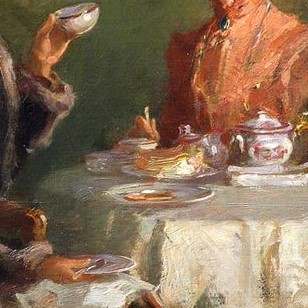

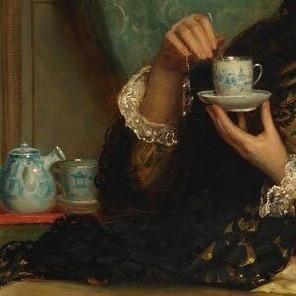

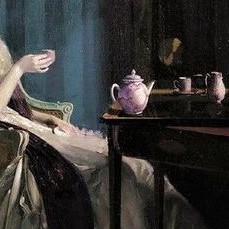

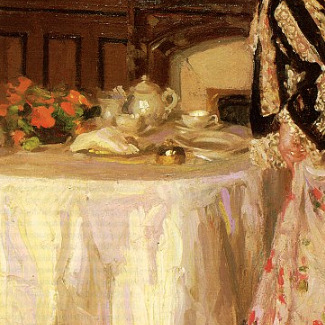

Art Details Series: Afternoon Tea
|| George Dunlop Leslie, Walter Granville-Smith, David Emile Joseph de Noter, John Bagnold Burgess, Valentine Cameron Prinsep, Charles Bittinger, Henry Salem Hubbell, Joseph Caraud, Edward Portielje ||
#aesthetic#art#women#women in art#art details#art detail#light academia#dark academia#20th century art#19th century art#18th century art#George Dunlop Leslie#Walter Granville-Smith#David Emile Joseph de Noter#John Bagnold Burgess#Charles Bittinger#Henry Salem Hubbell#Edward Portielje#Valentine Cameron Prinsep#Joseph Caraud#art series
939 notes
·
View notes
Text




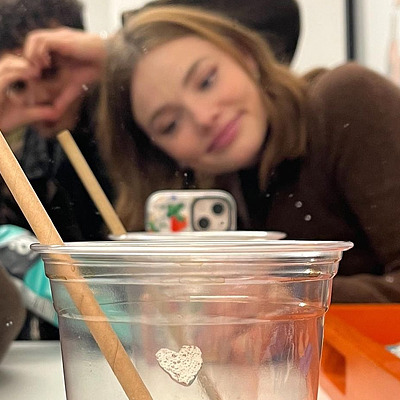







#kristine froseth icons#icons#kristine froseth#female icons#actress icons#nan st. george icons#nan st. george#the buccaneers icons#the buccaneers#alaska young icons#alaska young#looking for alaska#looking for alaska icons#sierra burgess is a loser icons#birds of paradise icons#birds of paradise#marine elise durand icons#marine elise durand
43 notes
·
View notes
Text

28 notes
·
View notes
Text

John Wayne, Burgess Meredith, Kirk Douglas, and George Kennedy in In Harm's Way (1965)
#george kennedy#john wayne#burgess meredith#kirk douglas#in harms way#hollywood#old hollywood#classic movies#old movies#60s movies#1965#wwii movies#war movies
11 notes
·
View notes
Note
1 and 12 for the books ask :)
Thank you for the ask ✨
Book you’ve reread the most times?
Oh boy... It's a split between George Orwell's 1984 and Anthony Burgess' A Clockwork Orange. I swear I read the latter like three times in one year. It's a relatively short book, but still...
I was, for some reason, obsessed with both of them when I was a teenager.
12. Did you enjoy any compulsory high school readings?
Definitely! Already answered here, but I'll throw in Lord of the Flies and Mňačko's The Taste of Power as well for good measure. (That last one is so good! I'm convinced that if it was written by an English-speaking author instead of a Slovak one, it would be super famous and taught in schools around the world. To me, it's basically a 'what if Kundera - but with interesting and complex female characters actually?')
#Lin reads#thanks for the ask!#ask game#books#reading#a clockwork orange#1984#george orwell#anthony burgess#literature#ladislav mňačko#william golding#lord of the flies
9 notes
·
View notes
Text

The Rugby Burgess Brothers
82 notes
·
View notes
Photo



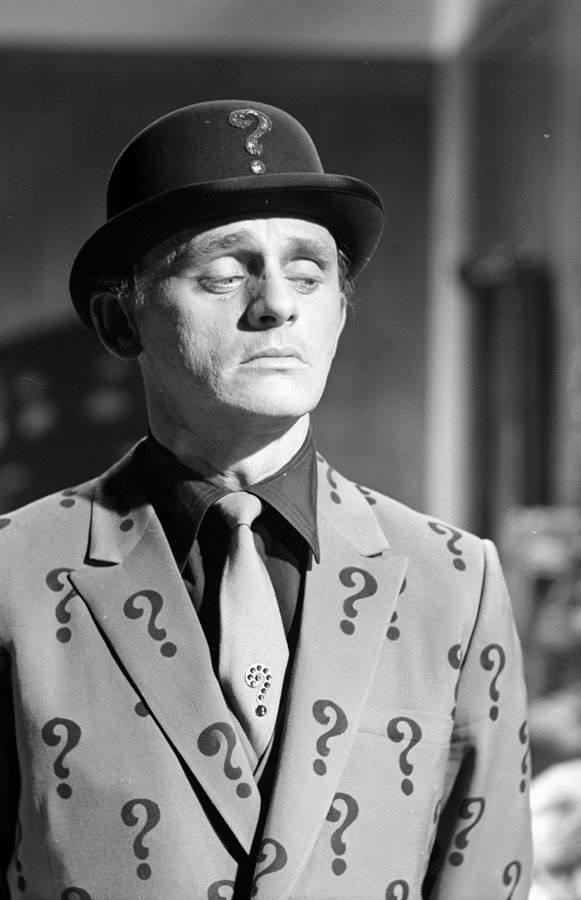



I got the complete boxset of the 1966 Batman series for Christmas, and I’ve very nearly finished watching the first season. It’s a series you don’t have to rush - it was never designed to be binged - so I’ve just been watching four episodes at a time (& since the first season is all two-parters, that works out to two stories at a time).
It’s not the first 1960s TV series I’ve watched (I’ve watched Dr Who along with bits of The Stranger and Thunderbirds), so I’m used to the look of the show. And I have references for what 1960s TV was broadly doing at the same time. But compared to the others, it leans far more heavily into its aesthetic: each episode is basically constructed of short setpieces (heists, fight scenes, chases, cliffhangers), and with rapid cuts from setpiece to setpiece it tries to propel the viewer through 25-minutes packed with excitement and comedy.
There isn’t much space within that for anything that feels more emotionally substantial (at least at this point). But there is one glaring exception. It’s in my opinion the best two-parter of the series to this point. It is the first appearance of Mr Freeze, here played by George Saunders and, for a villain who’s usually summed up as “a joke until the 90s animated show got its hands on him,” he’s genuinely tragic here? There’s a genuine emotional thread throughout the two-parter as Batman feels personally responsible for Freeze’s condition, and Freeze’s ambition isn’t world domination or anything like that but just... trying to find some semblance of justice for what’s been done to him. I wasn’t expecting to find actual pathos in this series but it’s there.
Maybe the rest of the show goes in a wildly different direction from here, but at least within its first season yeah - this feels like a TV series based on a comic book. It’s having fun being a TV series based on a comic book. And, admittedly rarely, it punches above its weight and gives its characters interiority and greater emotional depth than you’d think for a show that’s felt like a bit of a punchline for decades.
#batman#adam west#burt ward#cesar romero#burgess meredith#julie newmar#george saunders#victor buono#frank gorshin#the riddler#riddler#joker#penguin#catwoman#mr freeze#king tut#robin#1960s#TV#vintage TV#retro TV#comic book#comics
42 notes
·
View notes






